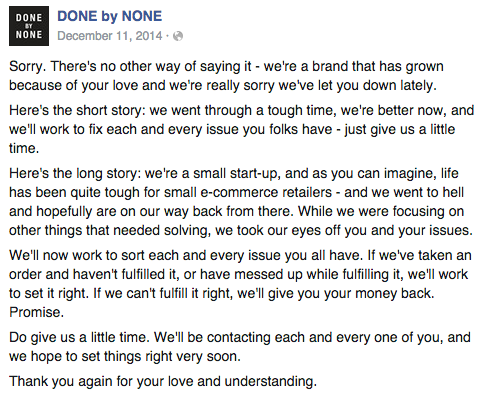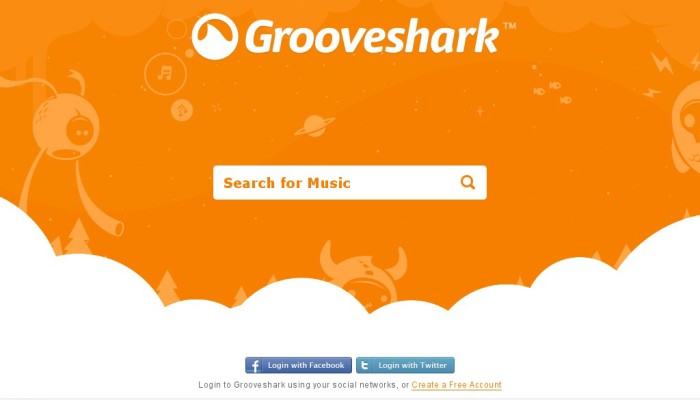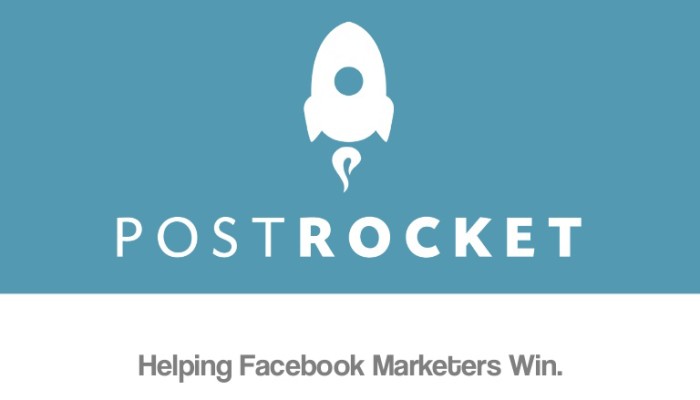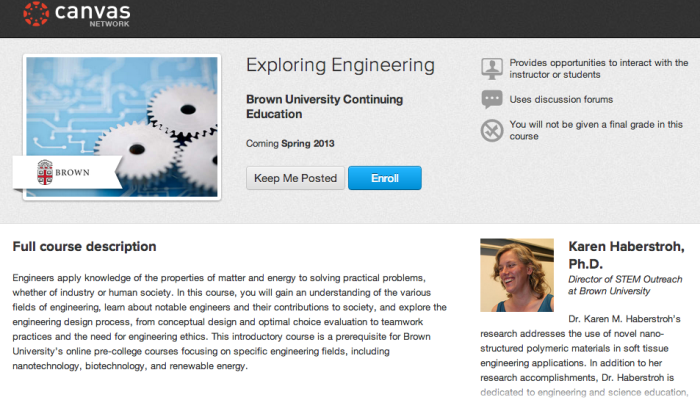The Journey for many startups is never a smooth one. Even the most successful startups like Airbnb had to undergo difficult periods. What sets the most successful startups apart from the ones that end up in failure, is that those successful startups were able to endure the hardship and come back from continuous rejection. However, sometimes, hardship and rejection aren’t the core factors. Failure behind a startup can be attributed to many factors such as deviation from the core vision, lack of monitoring, financial inadequacy, market penetration, even timing, and so on.
Here in this article, we will point out some startup failures in recent years and analyse the reasons from various founders and investors point of view from which you can gain experience knowing the reasons behind those failures and guard yourself against such mishaps.
1. Secret
After 16 months into the journey and $35 million in total funding, the founders decided to end the journey. The founders were forced to put the shutters down because they figured that Secret failed to represent the vision they originally had when he started the company. They ended up giving back all the investment money back to the investors.
2. Zirtual
This has been an interesting recent story. Zirtual, a virtual executive assistant service, was a ‘victim of burn’ as they call it. The ultimate reason behind its downfall was burning cash faster than they were generating revenue. Zirtual grew really big, very quickly, but its growth was faster than the administration could handle. It had a big team of employees whom it failed to provide payment during the later part and the clients also lost interest – 400 employees were facing the chop. However, it didn’t end up closing. Startup.Co quickly acquired Zirtual 2 days after the announcement of the instant closure, saving 400 employees there job.
3. Circa
Circa was a news production company with the mission to provide unbiased, factual and and informative news. But it did not have the capital required to keep the production going and hence decided to close its production. Circa was regarded as too generalist in a news market that favoured expertise.
4. Kato
Kato was a business focused chat app that was founded that stopped its operation from August 31. Primary reason for its closure is the intense competition it faced from a similar app, Slack, which gained a larger portion of the market rapidly which was primarily used by Kato. For a small startup like Kato with small funding, it became quite difficult to regain the lost ground and hence, the final decision was to close it down.
5. The Last Guide Company
This company also closed down because it failed to execute the vision it had from the early stage. Adhering to your mission and vision is a key aspect behind your inspiration to move forward. When you deviate from your ultimate goal, you will not have the willpower to move forward.
6. Wattage
Wattage, a hardware company, had to close down because of its inability to create a market of mass customized electronics. Also, from a fundraising point of view, it failed to attract investors who will invest for a company looking to penetrate an unproven market. Why? Because it’s hard for a hardware company to continually iterate a hardware product time-and-time again due to larger costs. As a consequence, it had to call it a day.
7. Nebula
Nebula started its operation as a cloud computing platform but it visualized that the market would take several years to mature and as a venture based setup, it did not have the resources to wait that long. Therefore, it decided to make the difficult announcement to close its operation on 1st April, 2015. Learn some of the reasons why here
8. Done By None
Initially ran under the name handspick.com, DoneByNone experienced quite a few reforms in its ownership setup in early stage, and like many other startups, had to face tough times in the early stages. What happened during that process is that, it was unable to focus its care much on its customers in order to solve its own issues. It decided to close down its operation to solve its administrative and capital related issues and it promises to launch operation again once all the issues get fixed – we are still waiting for its return.
9. Brawker
Brawker was a platform that was set up to let people order anything with Bitcoin. But it had to shut down its operation though it had a pretty pleased user base. Yes, its users were happy but the startup was not. Its growth rate was not up to expectation and it felt that continuing its operations would not make much sense
10. Proto Exchange
It started its operation as a manufacturing company and had its own mission to revolutionize the manufacturing industry by becoming the face of the industry. However, it got deviated from its core vision and decided to shut down on May 27th, 2015
11. Balanced
Balanced is a startup that helps to process debit and credit card charges. However, it stopped its operation as Balanced in June and migrated to Stripe which is able to be innovative and grow rapidly, aspects in which Balanced lagged behind and was not able to grow individually
12. Wardrobe Wake-UP
Brookline-based fashion startup Wardrobe Wake-up decided to shut down its operation after 1 year into launching because of funding trouble. It failed to generate outside funding at a time of growth and was unable to use its resources to make up for it.
13. Melotic Exchange
It was a money transfer company that was closed down in May due to low demand and slow growth. It just did not have the growth to justify the ongoing costs of development, maintenance, and support.
14. Grooveshark
Grooveshark was a web-based music streaming service owned and operated by Escape Media Group in the United States. After $4.6 million in funding, it had to shut down its services after a long ten years because it failed to secure licenses from right holders for the vast amount of music on the service.
15. GigaOm
Gigaom was a blog-related media company started by Om Malik in San Francisco, California. It ceased operating March 9, 2015. The main reason behind its closure was that it lost its independence, and its assets were controlled by its lenders.
16. Digital Royalty
This startup emerged in the scene with the mission to empower brands to be human and inspire personal connections to positively disrupt the world. After six years of an up and down journey, it decided to hang up the crown in June because it felt that it wouldn’t be able to maintain its core values because of sizeable shifts that affected the company.
17. TalentPad
TalentPad was a curated recruitment marketplace connecting high quality talent with employers for roles in technology and product management in India. But it decided to shut down because it failed to figure out a scalable business for a big enough market.
18. 37coins
37coins was a bitcoin wallet provider headquartered in Sunnyvale, California. The company launched on December 31, 2013, and announced its closing August 12, 2015. It decided to shut down because it was unable to deliver a quality product that showed product-market fit. Besides, it also found that SMS delivery between different carriers in countries outside the USA is unreliable.
19. Campus
Campus is a network of shared houses. Its mission was to make it easier to find authentic, real world connections and build meaningful relationships. But it has decided to close down its operation from August 31 because of its inability to make the business into an economically viable one.
20. Poliana
Poliana was a political startup that created a system that auto-generates interactive visuals that expose how corporate money influences political decision making on a daily basis. But it decided to close down because it ran out of money.
21. Backchat
Backchat was a messaging app to connect with friends and to have anonymous conversations. But it decided to close down after couple of years of service because it felt it was not able to adapt fast enough to changing market and product conditions which quickly began to show in usage metrics.
22. TwitPic
TwitPic was a website and app that allowed users to post pictures to the Twitter microblogging service. It has decided to shut down from September 25th because it was accused of trademark issues with Twitter and it did not have the resources to fend off a large company like Twitter to maintain its mark. Therefore, it has decided to shut down.
23. Berg
Berg came into the scene as an internet-connected printer that makes the day’s forecasts, important news, and crosswords available on receipt paper. Despite raising $1.3 million in total funding, it decided to wrap its operations up because it failed to reach a sustainable business in connected products.
24. Wishberg
Wishberg used to be an online platform for users to share their wishes and inspire others with their achievements. It started its journey in 2011 but decided to close operation under the name Wishberg and join with Freecharge because it realized it was unable to grow big on its own.
25.Turntable.fm
This was a music based startup that was in operation for four years along with three other startups named sticky bits, turntable live, and Piki. But it was unable to grow because of lack of funding and decided to wrap up after four years.
26. PostRocket:
PostRocket, which raised $15 million in total funding and went though 500 startups, was a startup that helps customers optimize their Facebook posts for maximum exposure and engagement, announced that it will be shutting down on August 2015. When it started, it wanted to not only help marketers succeed in Facebook marketing but do so with an exceptional product and service to back it. But it felt that it was never able to achieve the high standard it sets. Hence, it decided to shut down.
27. Serendip
Israeli-based music tech startup Serendip shut down in September 2015. It decided to take this tough decision as it realized that it could no longer sustain in being the same startup as it once was. The cost of processing millions of posts every day and providing relevant and engaging playlists to users across web and mobile app grew bigger than it could handle.
28. Blurtt
Blurtt was a photo sharing app for the iPhone that allows users to captionize and share photos with others. Prime reason behind its closure was the lack of funding it suffered, and multiple pivots from their other business models.
29. Manilla
Manilla was an account management startup that was closed down on July 1. The startup won many awards and had been well supported by its user base but it felt it was unable to achieve the scale necessary to make the economics of the business viable.
30. SpringPad
Springpad was a free online application and web service that raised $7.3 million in total funding, which allowed its registered users to save, organise and share collected ideas and information. It decided close down as it realised that it was not able to secure additional funding or scale to become a self-sustaining business.
31. Inq Mobile
Inq, which was founded in 2008, launched the first facebook phone by integrating with facebook to create a social smartphone. But it decided to opt out of the hardware industry and concentrated on shifting their focus on creating software products.
32. Outbox
Outbox launched its service as a mail startup to digilatize your mail. With total funding of $5 million, it used to send people to customer’s home to pick up their physical mail and then digitalized that mail for a cost of $4.99 per month. But not enough people were subscribing to its services compared to the cost of running such a startup, which eventually led to the demise of this service.
33. Argyle
Argyle was a US based social media marketing platform which started its journey with the mission t help social media marketers achieve greatness by providing them with the tools they sorely needed to manage their social world. Despite raising $1.6 million in total funding, it faced tough times to keep pace as a media marketing platform with competitors like Facebook, Twitter, Adobe, HootSuite, and Radian6. After four years of operation, it decided to close down its service.
34. Stipple
With total funding of $14.4 million before closure, Stipple was an image tagging advertising startup that was founded in 2010. The company created tagging technology that allowed users to hover over digital images and dive into details provided by the brand, like cost or location. It started to produce good revenue after 18 months of operation. However, profitability was just not high enough to match the high cost structure of the startup. Hence, it was closed down.
35. Zumbox
Zumbox, which raised a total of $30+ million in funding, was another digital mailbox service just like outbox. Zumbox was a proposed hybrid mail service for receiving postal mail via the web. It was founded in 2007 but shut down its operation in 2014 because its founder visualised that the time and cost required to materialise the vision of digital mail marketing is more than the market is prepared to invest.
36. Mochi Media
Mochi Media was a browser-based games network, with more than 140 million monthly active users and 15,000 games on nearly 40,000 publisher websites. After raising $14M in funding, Mochi Media was dissolved by its parent company Shanda Games in March 2015. All of its services were wound down, and final payments were paid to those eligible at the end of April 2014.
37. Vitoto
Vitoto was a startup I founded in July, 2012 that set out to create a collaborative video app for the iPhone. The main reason behind its dissolution was lack of funding. It was not able to generate enough money for the investors. As a result, this promising startup nipped in the bud.
38 .NewsTilt
NewsTilt was a YCombinator-backed startup which aimed to provide services to help journalists become entrepreneurs and earn a living off their work online. It closed down in July 2010, a total of 8 months after it was founded. Main reason behind its failure was communication problem between the administrators which resulted in lack of trust among the journalists and they stopped posting contents. Besides, it never had a large number of readers. I highly recommend you read this 7,000 word blog post by founder Paul Biggar.
39. Dinnr
Dinnr, which raised $10.1 million in total funding, was a web platform that delivers ingredients with a recipe to create meals at home. On January 12, 2014 it decided to close operations because the founder realised that his startup was not doing quite enough to help people solve their problems. Himself and the investors were also running out of ideas as to how to make people buy his product.
40. Seesmic Videos
Seesmic Videos was a video sharing platform through mobile that toyed with Youtube and vine. What the founder says about the failure is that, it was in operation ahead of its time in pre-Iphone and pre-android era. They had to use adobe flash on browser which was not so convenient. As a result, it was able to attract only a small portion of the market and did not turn out much profitable.
41. Treehouse Logic
Treehouse was a visual configurator platform company that helped retailers and brands quickly build product customization experiences on their ecommerce sites. However, it had some technical issues as well as administrative. It to some extent emphasized on wrong problems to solve and did not quite turn out to be as effective to its potential user base. I highly recommend reading the founder’s answer to ‘Why Customisation startups fail’.
42. Patient Communicator
This startup used to operate a patient support platform that enables transferring phone calls to the Web, allowing doctors and staff. It started as a product for the founder’s medical practice. Therefore, it failed to identify the potential of it as a product. Besides, lack of passion, an already crowded market and inaccessibility of doctors led to the failure of this startup.
43. Greengar Studios
This was a Vietnam-based startup that developed mobile applications for users all over the world. This startup was successful in quite a few aspects like, millions of downloads of different apps, vast user base, huge profit amount in bank, award win. But what it could not do in five years of journey is to create a scalable business. That was the prime reason behind its closure.
44. Rivet & Sway
Rivet & Sway, which raised total funding of $2.4 million, was an online retailer to make popular to purchase eyeglass online for women. It had a growing customer base, attractive pricing, and an adept CEO. It faced problem to maintain the cost of customer acquisition. It was said, that women prefer to try out frames before they make any purchase decision. The cost of moving frames back and forth can be quite costly. This cost became a hindrance to its progress, and without a quick and effective pivot, and the startup put the shutters down after 16 months.
45. Dijiwan
Dijiwan, a former digital marketing startup based in Bordeaux, France. It had to close to down after six months after raising about half a million euros from public investors. Reason for its closure was attributed to faulty hiring and management process, soaring cost, inability to add value to the customer base.
46. Disruptive Media
Disruptive Media was a design studio that specialised in cost-effective, strategic, integrated communications for community-focused organisations. However, it did not have the funding required to launch the startup globally to attract more user base. Therefore, the founder decided to wrap it up right there.
47. Tutorspree
Tutorspree was an online platform that offers web based tuition services for the U.S students on various subjects. Although it achieved a lot due to SEO dependence, it failed to create scalable business required for smooth operation.
48. Unifyo
Unifyo was a startup in the relationship management space. Its vision was to enable people to build and maintain more relationships. But this venture turned out to be a failure because of lack of vision, focus which resulted in unnecessary effort to scale prematurely.
49. Looksery
Founded in July 2007 and raising total funding to $3.2 Million, Lookery provided demographic marketing services that enable social networks to distribute their data as targeting information. It took quite a few wrong steps that pegged it back. One big mistake for it was to get integrated with facebook which ultimately did not do much good for the startup rather than looking for its own interest. Investing under facebook platform turned out to be a damaging step. Besides, persuading the sales team to build something before the market was ready for it did not go much for the startup either.
50. Canvas Networks
After raising a total of $3.6 million in funding, Canvas Networks was a website centered on sharing and remixing media, particularly images. It was founded in 2011 and on January 21, 2014, the Canvas blog announced that the site was shutting down. Its most successful product Drawquest was downloaded million times and had a vast user base. Yet the founder found it quite difficult to build a business with a single app offering and was not really able to monetise mobile applications.
Hope you enjoyed this blog post 🙂















